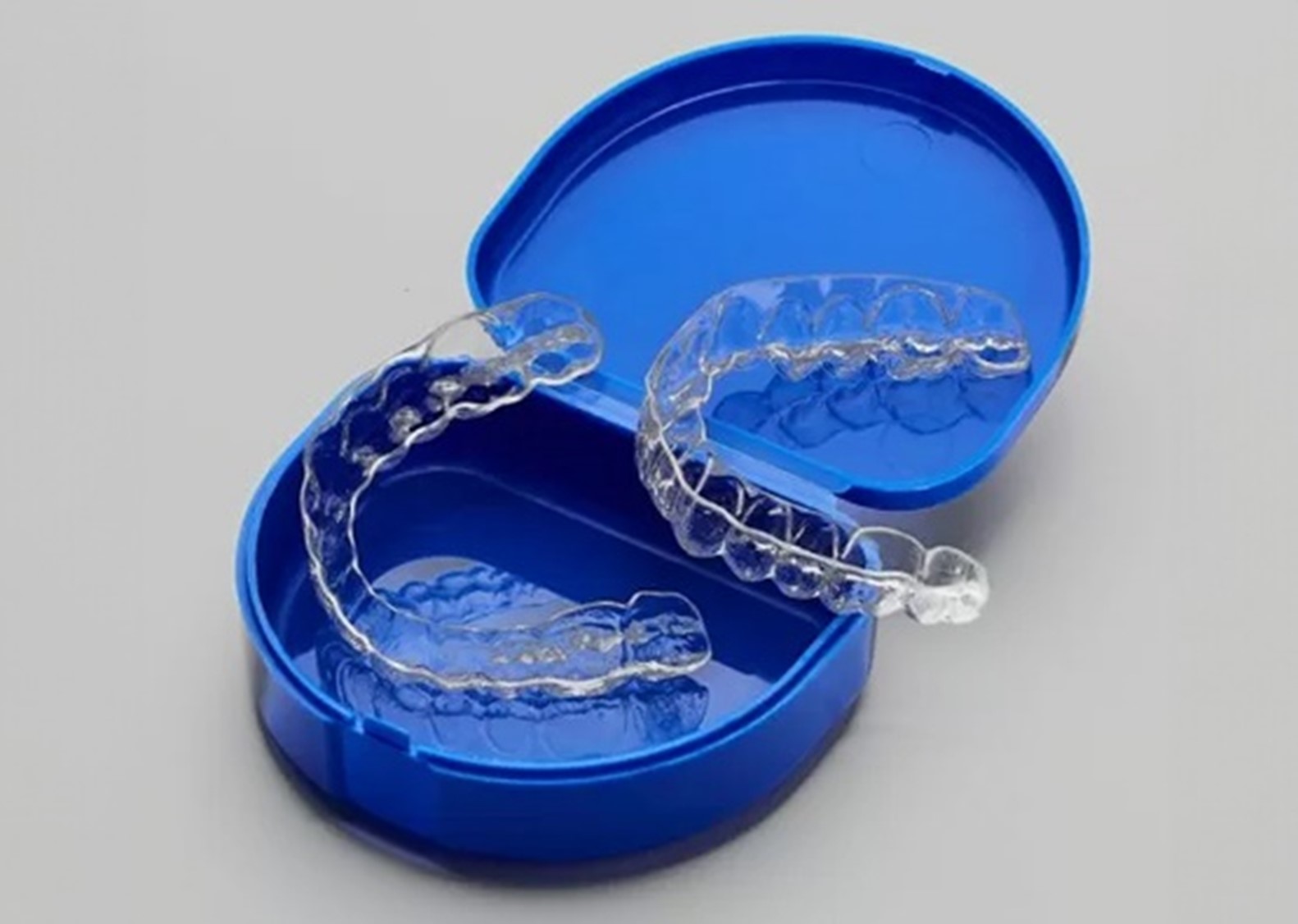
Teeth aren't set rigidly in the jawbone. They are actually held in place by fibers called periodontal ligaments. After teeth have been moved, it takes several months for these ligaments to adjust to the new position. Therefore, it is essential you wear your retainer as directed for the duration your orthodontist recommends. Using your retainer ensures you don’t waste all the time, effort, and money it took to get such a beautiful smile.
After your braces are removed, we will use our 3D scanner that will allow us to then 3D print a mold of your upper and lower bite. From there, we will create your initial set of retainers. Patients usually receive their retainers on the same day braces are removed or the next day. It’s very important after braces are removed to quickly get to wearing your retainers to prevent teeth movement.
.png)
For some patients, a bonded lingual retainer (also called a fixed-permanent retainer) might be a better solution. It’s bonded (or glued) to the lingual (tongue side) of the teeth. A thin lingual retention wire is affixed to the first 6 (anterior) teeth of both the upper and lower arches. These are the teeth most likely to shift to their original position after treatment. A lingual bonded retainer is considered semi-permanent since it’s bonded and can’t be removed. We recommend it for at least one year, but it can remain for up to 10 years.
.png)
One of the most significant benefits is that it stays in your mouth 24/7. Since it can't be removed, there's no chance of losing it. You don't have to think about it, but you can rest assured knowing it's always working for you to keep your teeth in position.
Are there any downsides to a bonded lingual retainer? Lingual bonded retainers can be a little tricky to clean since they are on the back of your teeth, but really no more than what is required for braces. Food can get stuck in this retainer, which can lead to plaque and tartar. However, if you performed proper hygiene and used floss threaders with braces, it’s the same approach. Maintain regular cleanings and dental check-ups every six months. Avoiding crunchy or hard foods that can possibly damage the wire will help make them last.
The retention phase lasts a minimum of 24 months, but it really depends on an individual’s teeth. Removable retainers are worn full-time (except while eating and brushing) in the initial retention phase, then only at night in later months.
During the period of night-only wear, we have a chance to evaluate the natural stability of the orthodontic correction and decide if tapering the amount of wear of the retainers is appropriate. For individuals with stubborn teeth trying to return to their pre-treated position, and for many adults, routine nightwear is the best insurance that their teeth will stay aligned.
Since patients after treatment wear their retainers full-time, it’s not uncommon (especially for teens and younger children) to need retainers replaced from time to time. Some common reasons are accidentally throwing them away (especially during lunch and folding them up in a napkin), cracked or worn out from use, a pet (typically a dog) chewing on them, or just simply being misplaced. It’s essential to get your retainers replaced to avoid any tooth movement and/or relapse.
Our Retainer Protection Program helps you protect your smile investment. Patients can pay a one-time fee of $550 and receive unlimited retainers for the next 5-years with only a $25 co-pay per retainer replaced. This fee can also be added at the beginning of treatment so the cost is spread out over the treatment financing agreement making it very affordable.
To stay fresh and germ-free, all retainers need proper care. Fixed retainers can be cleaned with brushing and flossing, and using a floss threader or interproximal brush can help immensely with this.
Removable retainers can be cleaned gently with a regular toothbrush — but clear aligners may become scratched if cleaned this way. Denture cleaners, as well as special retainer cleaners, can be used to clean most removable retainers. Don't expose your retainer to excess heat or wash it in very hot water. This can cause the retainer to warp and become unusable.
Remember always to carry and use a retainer case. It’s surprising how many retainers end up folded in a napkin and accidentally thrown away! With proper care and conscientious use, a retainer can help you transition from braces to a permanent and healthy smile.
